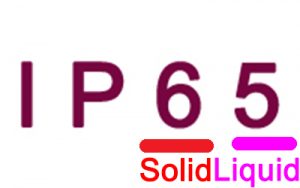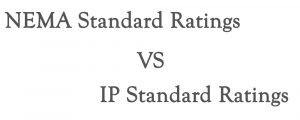
Cable management in engineering projects refers to the effective management of any electrical or optical cable installed inside a cabinet used for any electrical purpose. This term is frequently used for planning, workmanship, or products. Cables in any engineering project can be easily tangled and because of this they can be very difficult to work with. Because of this, this results to devices accidentally being unplugged once someone wants to change or move a certain cable. This is what you usually call cable spaghetti. Any problem or diagnosis for this when it comes to electrical enclosures can be very hard.
Cable management in engineering project is able to support and contain cables being used during the installation of equipment. Therefore, it can make subsequent maintenance or systems to the cable wiring easier. The products such as cable baskets, ladders, or trays are being utilized to fully support the cables through the routes.
Proper Cable selection
In choosing the right cables, rightful selection is of utmost importance. For example, the ribbon cables are being utilized to connect the Parallel ATA drives being connected to the motherboard that can disrupt the airflow being put inside the computers. This make the case fans being very less effective. Most of the SATA cables are very compact and unique, therefore they do not have this kind of problem.
Proper Cable labeling
The proper color coding of cables being used is seldom utilized to keep track which is the right cable from others. For example, the wires that comes out from the power supplies are being color coded to determine the right voltage of the cables. By properly documenting and labelling the cable runs, and grouping the cables together via cable ties, lacing, or rubber bands or any other means and running them or clipping them through the cable guides are one of the most popular ways of getting them organized. In drop ceilings, hooks or trays are being utilized to protect them from the electrical interference.
Planning your cable management is very important for the cables so that there will be smoothin usage and grouping of the proper cables.
Cable strain relief
There should be strain relief being installed inside the electronics enclosure, mounted in a 35mm DIN rail shape H.
Cable strain relief is one of the many mechanical protection for the flexible electronic wirings or cables, conduits, and pneumatic hoses. This is regulated by the European standard EN 62444.
Because of the strain relief component, the connection that happens between a flexible electrical lining and the connection port is being protected from the mechanical stress. Most often than not, the lines are being fixed by clamping or grouping them into single cable lamps that were manufactured from plastic or metal. There is another possibility is to utilize the so called cord grips that is composed by weaved wire strands that places a grip around the cables.
There is a more cable-friendly alternative to this type of cable management by effectively attaching the lines to the special strain relief plates just by using the most common cable ties. In the case of some of the industrial applications, one of these strain relief plates are cost-effective because the packing density is much higher. The density is the number of cable lining that has to be installed on the palate. This is normally designed just by holding one single line of cable management.
In addition to this, most of the available cable clamps are not very flexible when it comes to re-routing the lines with different diameters. This causes very high acquisition cost that will eventually lead to high storage costs. The installation of the single cable clamps normally take a lot of installation time, and it depends on the laying length of the cable wires. The strain relief plates can be a more flexible solution that allows the different parallel routing of several line because of different diameters.
Strain relief is usually required for any of the electrical lines considered as terminated that are being plugged in into the ports or sockets to prevent the accidental ripping out of the connector. The point the lines have to be strained heavily relies on the type of the application. For example , the profinet being utilized for automation is recommended to have a strain of relief component approximately 1 m / 3.5 ft from the connection point.
This strain relief’s components are also being utilized in some applications wherein the cables, hoses and the conduits are exposed to the constant and very dynamic stress which are cable carriers as well as the drag chains.
Computer data cabling, structured cabling, LAN cabling
Generally speaking, one of the end of the cable being terminated is considered as the data cabinet. The other end of the cable that ends at the desk. This only means that the cable management needs are either end or are totally different.
The buildings or other office furniture are most often designed and established with the right cable management in mind. For example, some of the desks usually have holes to pass the cables and dropped ceilings, raised floors, and in floor cellular raceway systems that gives easy access.
There are cables that does have requirements given for the minimum bend radius or what is considered as proximity to other cable from another cable. This is can be particular to the power cables to avoid the crosstalk or possible interference. The power cables usually needs to be grouped separately and suitably apart from the data cables. It should only cross the right angles which minimizes the electromagnetic interferences.
The organized routing for the cable management of the computer case should allow for the optimal airflow or even cooling. A good and organized cable management makes a difference when it comes to working inside the computer much easier by giving safer and easier access to hardware installation, repair, or even removal. Some of the PC enthusiasts shows the internal components of their built systems with a window provision that shows the aesthetics of the internal cable management. It also sows their skills and capability of the maker. With this in mind, the IT industry is in deep need of the data cables that needs to be added, moved, or removed, several times during the installation process. The usual practice is to install the fixed cables in between the cabling closets or cabinets. These are the cables being contained in the cable trays, etc. They are terminated at each end unto the patch panels for easier communications inside the cabinets or outlets at the desktop. The circuits are then being interconnected unto the final destination by utilizing the patch cords.



